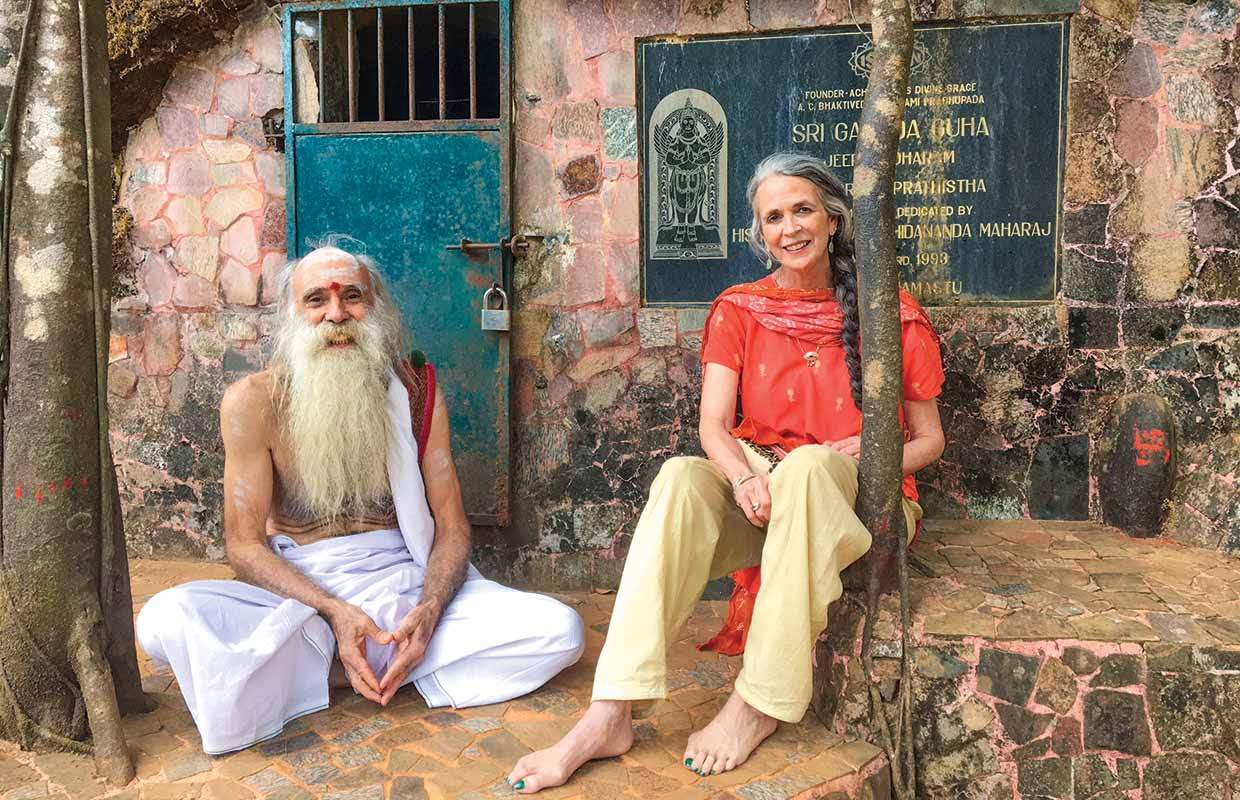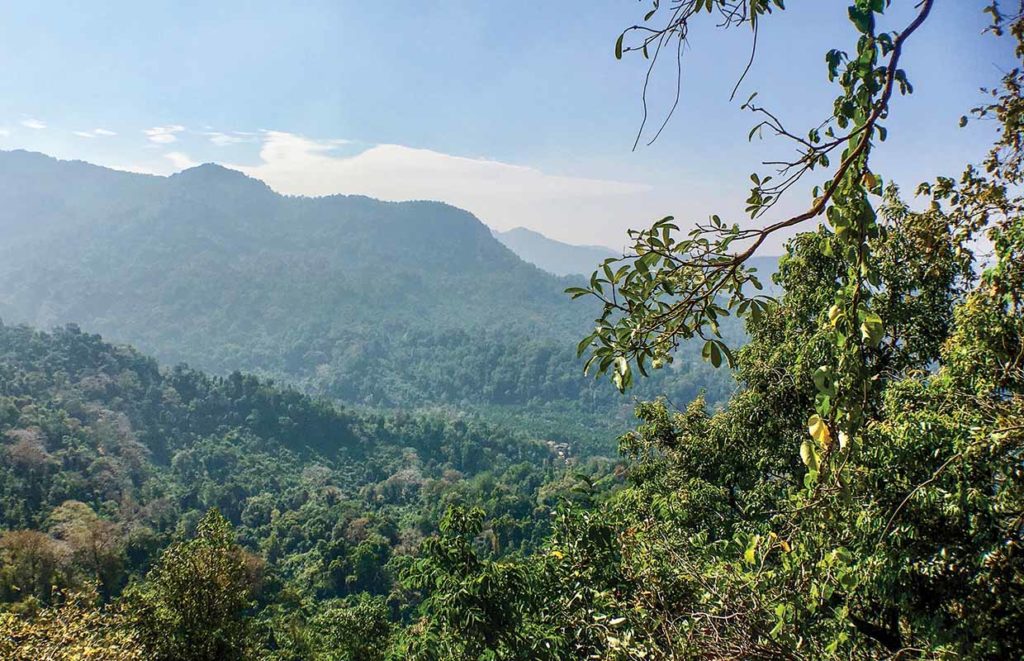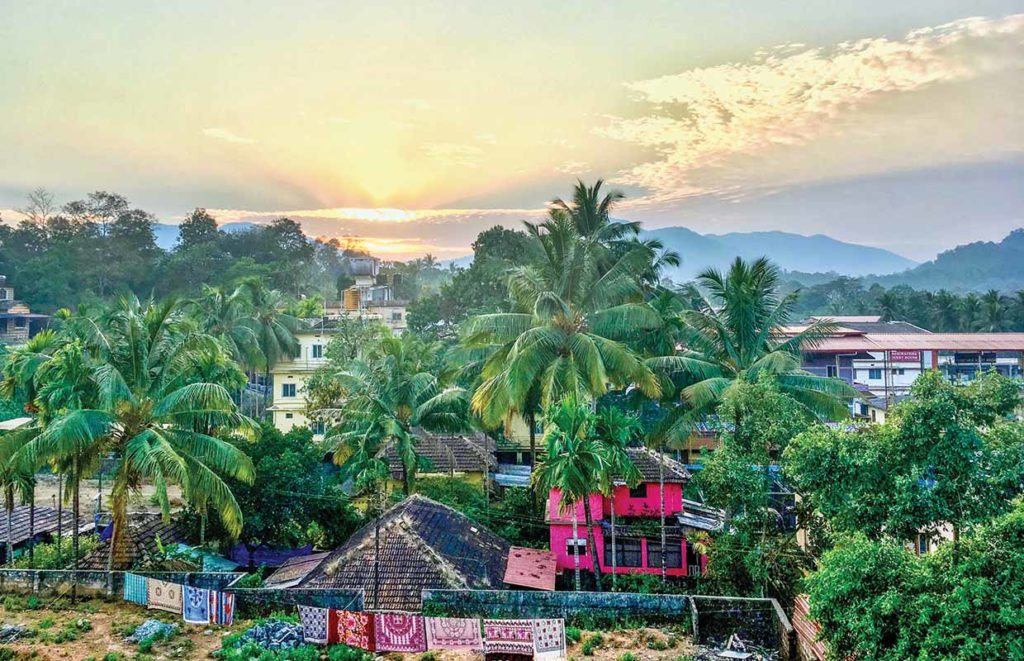Surviving India Without Ganja
Longtime cultivators try traveling sans cannabis.
I was blessed with the good fortune of being born in the right place at the right time — San Francisco in the 1960s — so I became a flower child. Admittedly, I was a teenager in “The City,” marijuana was everywhere and I took it for granted.
I’ve been a regular cannabis smoker for almost 50 years now — clear proof that it doesn’t stunt your ability to lead a fulfilling life. As a small craft cannabis farmer and co-founder of Swami Select brand flowers, my appreciation for the sacred herb has only increased over the years.
Both Swami and I began our individual global travels in the early 1970s. In the ’80s, we traveled together and lived on the road in Asia for several years. We explored ancient temples, experienced exotic lifestyles and imbibed various forms of cannabis, particularly in India.
Often we would be in the middle of nowhere, waiting for a train that was 12 hours late, or maybe on a long and bumpy bus ride, and we’d play an imaginary game of “fill the shopping cart,” piling in every favorite food we craved.
In fact, we were on the “diet of non-availability,” which applied to all food items that simply were not available in India. It was kind of an “out of sight, out of mind” attitude that did indeed keep extra pounds off. However, we always managed to keep a healthy stash of good Indian charas with us (AKA hashish). It allowed our imaginations to go wild envisioning the foods we were missing.
We recently returned from a quick two-week trip in India. It had been too many years since we were there last, and we needed to check in at some of our favorite temples for a recharge. But considering how visible we are, to be on the safe side, neither of us carried any sort of cannabis product with us. Hence, it was two weeks of the diet of non-availability once again: the food choices in India had blossomed since we were last there, but this time cannabis was what we were missing.
The good news is that, as we all know, there are no horrible symptoms that accompany a cannabis fast. Quitting cannabis merely provided us both with Technicolor dreams for the first few nights. What we did notice though, is how we missed it as true medicine.
Do you get jet lag? It helps to eat edibles on the plane to get deep sleep, and then to smoke some once you’ve landed to get back to earth. Without cannabis, we both suffered from jet lag more than ever. I also noticed that my appetite basically disappeared for the first few days and even the tasty thalis and other South Indian delights just didn’t interest me.
When I did venture out to enjoy a spicy dish — and found myself facing the ensuing stomach issues that followed — I missed my cannabis so very much to settle it down. When Swami’s back hurt from hoisting the luggage or another long car ride, he really missed having a good topical to rub on, or a tincture to ease the pain.
Once again, I realized what a blessing this healing plant is in our life.
In Chennai, we hooked up with some local cannabis enthusiasts who host a radio show on the controversial subject and it was eye-opening indeed. They told us “everyone in India smokes weed.”
While I’m sure that is an exaggeration, I started to notice how hip the younger generation truly is, so I don’t doubt it is ubiquitous. In addition, during the annual spring festival of Holi, ganja is consumed by the whole family: a smoothie type drink called bhang — made from ground almonds, milk, rosewater, cardamon and cinnamon, mixed with finely ground cannabis and heated in ghee or clarified butter — is drunk all across the country. It culminates in one huge party where everyone throws colorful powder pigments on each other.
Yet oddly enough, cannabis remains highly illegal in this country, where cannabis use has been documented as far back as 2000 BCE. Holy men smoke large quantities of charas, and that is acceptable, but for the regular guy it remains a criminal offense to possess any cannabis products at all (except on Holi). Most often, Indian stoners smoke the famous Indian hashish, as they are yet to master the art of growing sensimillia, or perhaps they have lost the art over time.
In the mountains, where it grows like a weed, locals will harvest the plants for their seeds as well as the flower and leaf. The seeds provide lots of necessary protein. They’ll grind them up and add some salt and maybe some lime and chilies to make a sort of chutney that is delicious and nourishing. Then the rest of the flower and leaf matter, which is hardly worth smoking on its own, is made into charas to be enjoyed by babas and regular folks alike — it is all hush hush.
If you take a hike in the Himalayas in the autumn, you are bound to come across some fields of familiar plants. Well, they don’t exactly look like our Emerald Triangle beauties. The Indian plants tend to be tall and lanky, and no doubt have a higher CBD content than most plants grown in California. Western breeders have managed to raise the THC levels over the years, and just now strain hunters are trying to re-introduce land races to recreate the full cannabinoid experience.
Indian “weed” (as they still love to call it) is similar to the old Mexican block weed from the ’60s and ’70s — tons of seeds to sort out and skanky loose leaf that doesn’t give you much more than a sore throat. But you can make tasty and very stony edibles out of it, which some dedicated folks in India are starting to produce on the sly. How I would have loved to have shared some big beautiful Mendocino flowers with these guys, who manage to get by smoking such bunk herb. It just doesn’t seem fair!
It was very reassuring in Delhi to meet a wonderful man (name withheld for obvious reasons) who is attempting to grow good organic ganja at last. While he grew up in California, he chose to return to his home country to spread the knowledge about the benefits of growing with organic methods.
While it’s nice to know that we certainly could survive for two weeks without our beloved cannabis, it was quite a treat to smoke that first joint when we got home to Mendocino County. That old familiar wave of relaxation washed over me on the first hit and layers of stress peeled away.
Jet lag was considerably easier on the return journey, thanks to having cannabis medicine to greet us on arrival. We slept well, we ate well and we felt inspired from our pilgrimage.
The medicine had worked her magic once again.
Originally published in Issue 26 of Cannabis Now. LEARN MORE
TELL US, are you an avid smoker who has tried traveling without cannabis?
























